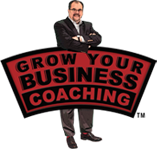I find learning how and why people act (behave) the way they do fascinating. I started learning about it all way back in Chicago when I was studying NLP. That’s Neuro Linguistic Programming. The founders of NLP learned that people (all of us) use strategies to make decisions and becoming convinced of something. These strategies aren’t conscious to you and me, but we use them none the less. We take in information and make meaning of things through our senses. We use all five, Auditory-Hearing, Visual-Seeing, Kinesthetic-Feeling, Gustatory-Tasting and Olfactory-Smelling, sensory components.
Since we all use the same senses there had to be some other strategy we used to create our convictions and come to decisions. This other strategy was given the name Meta Program meaning outside of the standard program or strategy. You can think of meta programs as habits of thought. There are several Meta Programs and I believe the world renowned expert on the subject is Shelle Rose Charvet. Shelle took the work started by a guy named Roger Bailey in the 1970’s and made it all substantially easier to understand and use. Her book, Words that Change Minds, is a must read.
The Meta Programs are broken down into Motivational Traits and Working Traits…
- The Motivation traits show how people trigger their motivation and behavior in the given context of work.
- The Working traits identify what sustains their motivation.
 One of the Motivation Traits is Toward vs Away From – a person’s attention is directed either toward what they want or away from what they don’t want. Simply put the person with a Toward motivation trait in a given context is focused on gain, growth or moving toward what they want. The person with the Away From motivation trait in a given context is focused on avoiding, mitigating or moving Away From an undesired outcome. Both Toward and Away From are useful. One is not better than the other, nor is one less than the other.
One of the Motivation Traits is Toward vs Away From – a person’s attention is directed either toward what they want or away from what they don’t want. Simply put the person with a Toward motivation trait in a given context is focused on gain, growth or moving toward what they want. The person with the Away From motivation trait in a given context is focused on avoiding, mitigating or moving Away From an undesired outcome. Both Toward and Away From are useful. One is not better than the other, nor is one less than the other.
Here’s a quick way to apply this concept.
Ask someone you know, “What do you want in (context) your work or your job?”
They will reply with the things that are important to them in that context. The context here could be the product or service you offer.
Then ask them a follow up question (you should ask this up to 3 or 4 times) “What will having that really do for you?” You can either mention what they said in the first question or just say “that” and they’ll know…
You’ll hear them say things like.. “So I can have…” or “So I will get… “ those are Toward answers on the other hand they may say… “So I won’t have to…” or “So I don’t…” those are the Away From answers.
Knowing this little strategy is very powerful because when you frame your product of service in the terms of Toward or Away From matched to your prospects strategy (Toward or Away From) you’re talking directly to how they think about the product or service you sell. There’s much more than this little example illustrates, and I encourage you to learn a little more before you actually use it in your selling strategy…
Here are some of the areas where you can use this strategy:
- Marketing Research
- Coaching
- Training for Behavior Change
- People Management
- Recruitment
- Skills Training
- Consulting and Problem-Solving
- Implementing Organizational Change
- Team Building
- Teaching and Learning
- Modeling
If you’d like to know more about all this you can visit a live talks I will be offering at the Marion / Grant County Chamber Sales and Marketing Seminar on March 10th. Or you can stay tuned for more here and watch my videos on IndyBiZTVShows.
To Your Success!






Leave a Reply